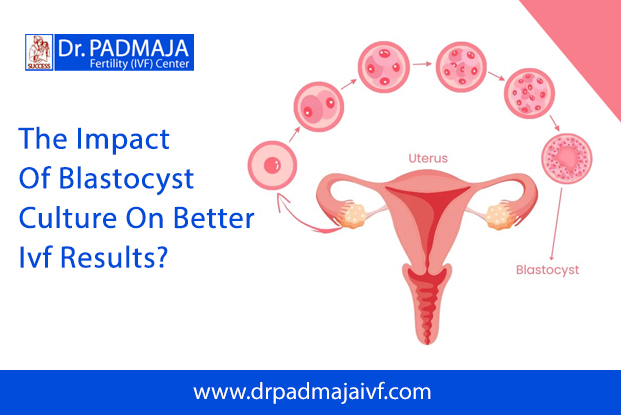In recent years, the field of in vitro fertilization (IVF) has seen significant advancements, one of the most notable being the technique of blastocyst culture. This method has revolutionized the way fertility specialists approach embryo development, leading to improved success rates for couples trying to conceive. At premier facilities like the best IVF center in Hyderabad, including Dr. Padmaja IVF Center and Dr. Padmaja Fertility Center, the implementation of blastocyst culture is making a tangible difference in patient outcomes.
Understanding Blastocyst Culture
Blastocyst culture involves allowing embryos to develop for a longer period—typically five to six days—before transferring them into the uterus. This process allows the embryos to reach the blastocyst stage, which is a more advanced stage of development. During this time, the embryologist can assess the quality of the embryos, selecting the most viable ones for transfer.
This method contrasts with traditional IVF protocols, where embryos are typically transferred at the cleavage stage (around day 3). While cleavage stage embryos can result in pregnancy, studies show that blastocyst transfer is associated with higher implantation rates and better overall outcomes.
Benefits of Blastocyst Culture
Improved Success Rates
One of the most significant advantages of blastocyst culture is the enhanced likelihood of achieving a successful pregnancy. Research indicates that embryos that reach the blastocyst stage have a better chance of implantation in the uterine lining. At leading institutions like the best IVF center in Hyderabad, patients often experience higher success rates thanks to this method.
Better Selection of Embryos
Blastocyst culture allows for better evaluation of embryo quality. By observing how embryos develop over several days, embryologists can identify those that are more likely to result in a successful pregnancy. This careful selection process is particularly important in cases where multiple embryos are created, as it helps to prioritize the best candidates for transfer.
Reduced Risk of Multiple Pregnancies
Transferring fewer embryos is a common strategy to reduce the risk of multiple pregnancies, which can pose significant health risks to both the mother and the babies. With blastocyst culture, fertility specialists can often transfer just one or two high-quality blastocysts, significantly lowering the likelihood of twins or higher-order multiples. This approach aligns with the practices at Dr. Padmaja IVF Center, where patient safety and health are top priorities.
Increased Convenience
For couples undergoing IVF, the emotional and physical toll can be considerable. Blastocyst culture can streamline the process by allowing for fewer embryo transfers. This not only enhances the chances of success but also reduces the number of cycles needed, saving both time and resources.
The Role of Expertise
While the technique of blastocyst culture is crucial, the expertise of the fertility team is equally important. At the Dr. Padmaja Fertility Center, a dedicated team of specialists works closely with patients throughout their IVF journey. The combination of advanced technology and skilled professionals ensures that couples receive the highest standard of care, maximizing their chances of success.
Dr. Padmaja and her team focus on creating a personalized treatment plan that considers each patient’s unique circumstances. This holistic approach to fertility treatment, combined with the advantages of blastocyst culture, sets the best IVF center in Hyderabad apart from others.
Considerations for Patients
While blastocyst culture offers many benefits, it may not be suitable for everyone. Factors such as the age of the woman, the cause of infertility, and previous IVF attempts can influence whether this method is recommended. Couples should have a thorough discussion with their fertility specialist to understand their options.
It’s also essential to recognize that success rates can vary. Factors like the quality of the eggs and sperm, the woman’s overall health, and the specifics of the fertility clinic’s protocols play a significant role. Therefore, patients should seek a reputable center with proven success in blastocyst culture, like Dr. Padmaja IVF Center.
Conclusion
The impact of blastocyst culture on IVF results is profound. With improved success rates, better embryo selection, and a reduced risk of multiple pregnancies, this technique is reshaping the landscape of fertility treatments. For couples struggling with infertility, seeking out top-tier facilities such as the best IVF center in Hyderabad can make all the difference. At Dr. Padmaja Fertility Center, patients receive comprehensive support and expert care, empowering them on their journey to parenthood. As the world of reproductive technology continues to evolve, advancements like blastocyst culture bring hope and optimism to those looking to build their families. If you’re considering IVF, it’s worth exploring the benefits of this innovative approach at a trusted center dedicated to helping you achieve your dreams.
About The Author :

If Dr. Padmaja Divakar is a public figure or a professional in a specific field, I recommend checking her official website, professional profiles, or reliable online sources for the most up-to-date and accurate information about her background, qualifications, and achievements.
Frequently Asked Questions (faqs)
- What is blastocyst culture?
Blastocyst culture is a technique used in in vitro fertilization (IVF) where embryos are allowed to develop for five to six days before being transferred to the uterus. This longer culture period enables embryologists to assess the quality of the embryos, selecting the most viable ones for transfer.
2. How does blastocyst culture improve IVF success rates?
Embryos that reach the blastocyst stage have a higher likelihood of implantation compared to those transferred at the cleavage stage (day 3). This improved selection of high-quality embryos leads to increased success rates for achieving pregnancy.
3. Why is embryo selection important in IVF?
Selecting the best-quality embryos is crucial because not all embryos have the same potential for implantation and development. By using blastocyst culture, fertility specialists can identify the most promising embryos, increasing the chances of a successful pregnancy.
4. Does blastocyst culture reduce the risk of multiple pregnancies?
Yes, one of the benefits of blastocyst culture is that it allows for the transfer of fewer embryos while still maintaining a high chance of success. This approach significantly reduces the risk of multiple pregnancies, which can pose health risks to both the mother and the babies.
5. Who is a good candidate for blastocyst culture?
Candidates for blastocyst culture typically include women under 35 with good-quality eggs and embryos. However, each patient’s unique situation should be evaluated by a fertility specialist to determine if this method is appropriate.
6. What factors influence the success of blastocyst culture?
Success can depend on various factors, including the quality of the eggs and sperm, the woman’s age, the specific fertility issues being addressed, and the overall health of the patient. The expertise of the fertility clinic also plays a significant role.

